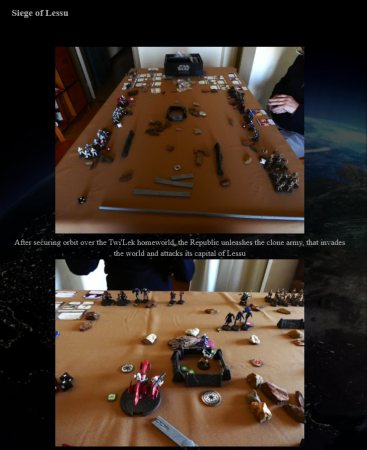Preparation: Filed and trimmed all the flash and mold lines from the miniature, and slightly repositioned the legs to get a stomping stance on the armored car. I pinned all the joints, slightly bent the arms (since I didn't like their original shape), and cut and reattached the lasers in the left arm to make them point forward.

To fill the base, I used plumber's epoxy and greenstuff - to fill gaps, and allow the armored car to appear sunken into the dirt and mud. To make the turret appear as though it were crushed into the body of the car, I used a Dremel to remove most of the center of the vehicle and the underside, so it would be easier to bend. I bored out the top of the car, so the back half of the turret would sit at a depressed angle beneath the mech's foot.
Finally, I decided I wanted to have a few patches of add-on armor spread out over the mech to resemble those down-and-dirty repairs from battle. I used flattened greenstuff and cut the shapes to the appropriate size, and used a pin to create rivet holes. A bit of superglue to make sure they stuck, and they were good to go. I also added a couple of bullet holes on the thigh to experiment with some add-on damage. The antennae were cut from a toothbrush and glued in place.

I used Krylon White Primer to prepare the miniature for painting. Cheap but effective is my approach to primers. I used to use GW primer, but it's much more expensive and I found it can be picky at times.

I consider my painting style to be completely random and somewhat wasteful at times. I'll do something, and realize I need to go back and do something else before it. I end up wasting a lot of time and effort, so hopefully you'll have read this part and understand that not everything I do is the proper or best way to do it.
Since I'd recently found I liked washing a mini before applying any light-colored paints, I decided to do an ink wash, since I still had a lot of ideas for what colors to use. I'd rather have the option of covering up a panel with a darker color, than to wish I had done a wash earlier in the process. A few drops of Games Workshop Brown Ink - mixed with some Flo-Aid, water, and a drop of black paint - were applied in a coverage wash. I let the wash set, and then repeated the process with another coat to get some darker shadows and smoother transitions. I won't necessarily need these, but a wash early on really doesn't hurt anything.

Past experience has shown me that if I don't seal an ink wash, the color will come off with even mild brush pressure. So to prevent this from happening, a coat of Games Workshop Matte Sealer was applied to set the colors and prevent bleeding or flaking.









